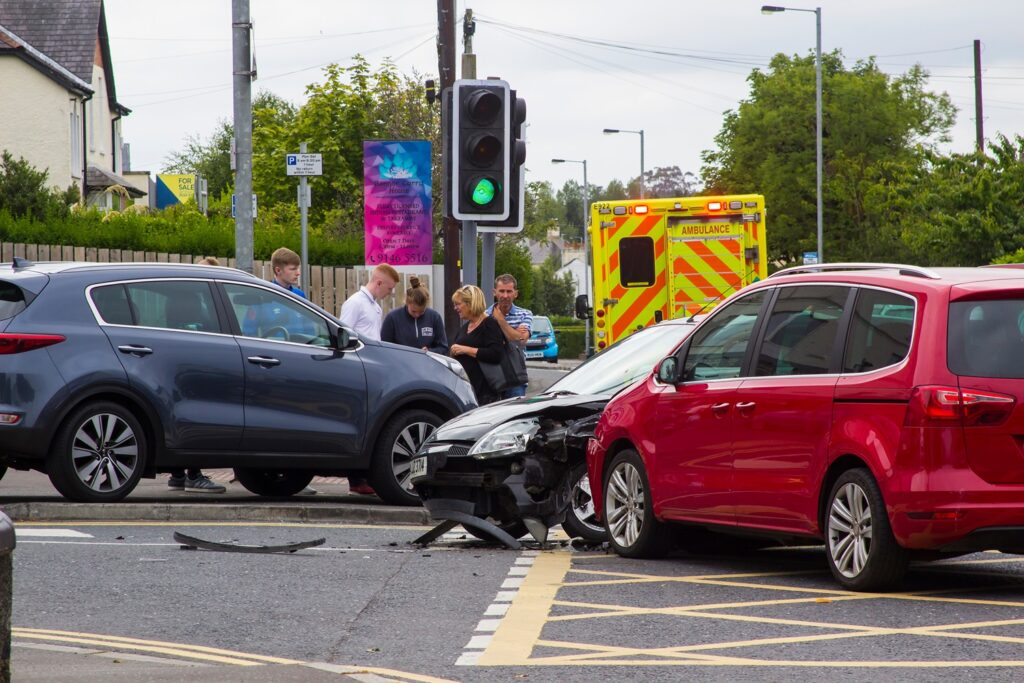Clickable Coverage
Auto Insurance
In the event of an auto accident, you and your family may indeed be financially responsible for damage caused by your vehicle to someone else's property. This liability typically depends on a few key factors:

In the aftermath of an automobile accident, healthcare costs can quickly escalate, especially depending on the severity of the injuries sustained. Here’s what you should consider regarding the financial impact of medical expenses:
- Severity of injuries: Serious injuries such as broken bones, spinal injuries, or traumatic brain injuries often require extensive medical care, including emergency services, surgeries, rehabilitation, and long-term treatment. These costs can easily reach thousands of dollars.
- Health insurance coverage: While health insurance may cover some of the medical expenses, certain treatments, therapies, or specialized care might not be fully covered, leading to significant out-of-pocket expenses. Deductibles, co-pays, and uncovered services can add up quickly.
- Auto insurance medical coverage: Some states require drivers to carry Personal Injury Protection (PIP) or MedPay, which can cover a portion of medical bills regardless of who is at fault. However, these policies also have limits that may not fully cover all costs.
- Fault and liability: In cases where the accident was caused by another driver, their liability insurance may cover your medical expenses. But if their coverage is insufficient or if they are uninsured, the financial burden may fall on you. Uninsured/underinsured motorist coverage is an option to help protect against this scenario.
- Legal action: In some cases, especially if the accident was due to negligence, you may be able to pursue legal action to recover medical expenses and other damages from the at-fault party.
Because medical costs can become overwhelming, having the right combination of health and auto insurance can be critical to avoiding excessive out-of-pocket expenses.
Bodily injury liability is a crucial part of your auto insurance that covers your legal responsibility for injuries to others in a covered accident where you are at fault. Here are the key points to consider:
- Coverage details: Bodily injury liability pays for expenses such as medical bills, lost wages, pain and suffering, and legal defense costs for the injured party. The coverage applies up to the limits you select when purchasing your policy.
- Importance of adequate coverage: It's essential to purchase enough bodily injury liability coverage to protect your personal assets in the event of a significant claim or lawsuit. If the damages exceed your policy's limits, you could be responsible for paying the difference out of pocket.
- State requirements: Each state has minimum bodily injury liability limits that drivers must carry, but these minimums may not be enough to cover serious injuries or lawsuits. It’s often recommended to choose higher limits for better protection.
- Excess liability or umbrella policy: To further safeguard your assets, consider purchasing an excess liability policy or umbrella insurance. These policies provide additional liability coverage beyond your auto insurance limits, offering a financial safety net if you're involved in a severe accident. For instance, if your auto policy covers up to $250,000 per person for bodily injury, but the claim exceeds that, an umbrella policy can extend that coverage by millions more.
Having sufficient bodily injury liability coverage and considering an excess liability policy ensures that you’re financially protected in the event of a major accident, reducing the risk to your personal assets.
Your automobile is indeed a significant investment and is vulnerable to various potential losses, including those caused by weather-related events, theft, and other unexpected situations. Here are some key factors to consider regarding the risks and protections for your vehicle:
- Weather-related events: Natural occurrences such as hail, floods, hurricanes, and even severe storms can cause substantial damage to your vehicle. Comprehensive auto insurance typically covers weather-related damage, but without it, repairs can be costly.
- Theft and vandalism: Cars are also at risk for theft and vandalism, which can result in loss or expensive repairs. Comprehensive coverage generally includes protection for these risks, providing financial compensation for the value of the car if stolen or for repairs due to damage from vandalism.
- Uncontrollable circumstances: Besides weather and theft, there are many other factors outside your control that can lead to losses, such as a tree falling on your car, hit-and-run accidents, or damage caused by animals. Comprehensive insurance often covers these types of incidents.
- Insurance coverage options: To protect your investment, it's important to have the right insurance coverage. Comprehensive coverage is designed specifically for non-collision-related incidents, while collision coverage protects you in the event of an accident. Bundling these can provide broader protection for your vehicle.
- Vehicle depreciation: Keep in mind that your car's value depreciates over time, which can affect the amount your insurance will cover if the vehicle is totaled or stolen. Some insurance policies offer gap coverage or replacement value options to help bridge the difference between the car's market value and any remaining loan or lease amounts.
By understanding the risks and ensuring adequate insurance coverage, you can help protect your vehicle from costly losses that are beyond your control.
In the event of an auto accident, you and your family may indeed be financially responsible for damage caused by your vehicle to someone else's property. This liability typically depends on a few key factors:
- Fault: Responsibility is often assigned based on who is at fault for the accident. In some states, liability is determined by negligence laws.
- Insurance coverage: If you have liability insurance, it generally covers damages you may cause to others. Each state mandates a minimum amount of coverage, but you may opt for higher coverage to limit out-of-pocket expenses.
- State laws: Each state has different rules regarding liability and insurance requirements. Some states are "at-fault" states, where the driver at fault is financially responsible, while others may be "no-fault" states, where each party's insurance covers their own damages.
- Property damage liability: Most insurance policies include property damage liability, which covers the cost of repairing or replacing the damaged property. However, if the damages exceed your insurance coverage, you may be responsible for the additional amount out of pocket.
It's important to understand your state's laws and your insurance policy to ensure you're adequately protected.

